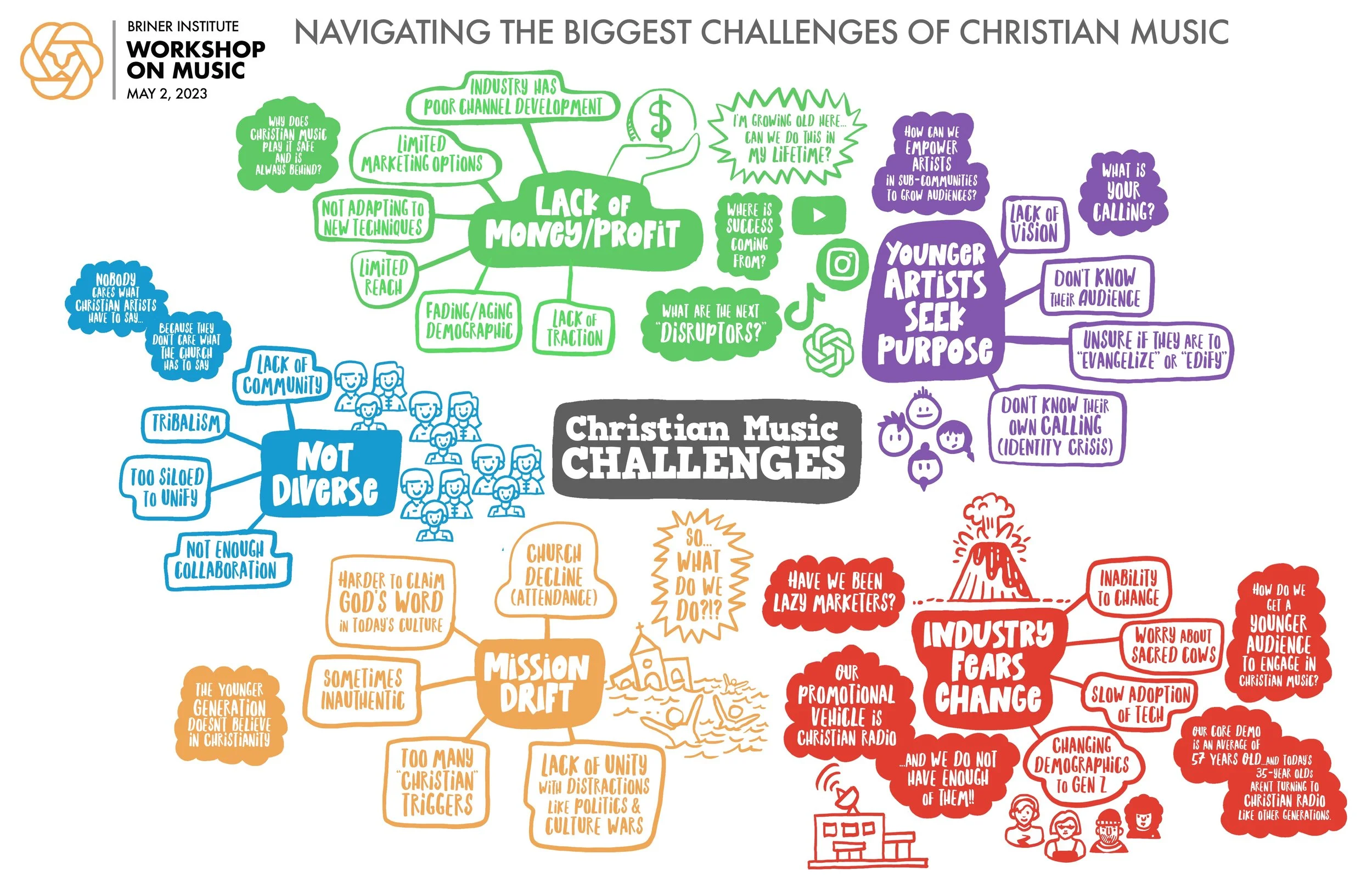In May of 2023, more than 20 members of the Christian music industry met to discuss the state of Christian and Gospel music. From 1993 until 2015, Christian/Gospel music accounted for roughly 3% of the overall music sales in the United States (less in other countries).
From 2016-2023, the format has been growing at roughly 5-8% per year, but overall sales have grown faster. Largely due to the proliferation of streaming platforms like Spotify and Gen Z’s adoption of new technology, Christian/Gospel music has actually slipped in overall percentages in the US to roughly 1.9%.
Why is Christian/Gospel music not keeping up with the overall growth in music consumption? What does this mean for the future of music produced by Christians for Christians? Can there be a lane of support by Christians for artists who want to express their faith and world view in other musical genres? What are the biggest challenges facing the Christian music industry?
To answer these and other questions, The Briner Institute’s executive director Barry Landis has been hosting a series of meetings with several Christian music insiders for several years now. Motivated by the message of Roaring Lambs in addition to his relationships across the genre, the group has zeroed in on several problems or challenges the music format faces. Meeting recently in Nashville, TN Landis and The Briner Institute conducted a Design Workshop which gathered the participants to compare notes on their answers to the question: What are the biggest problems facing our industry?
Methodology: Through one-on-one interviews, each of the participants had the opportunity to speak freely and anonymously about what they thought the answer might be. At the Design Workshop, participants were asked to review the Response on the left and then come up with a two or three word phrase to write on the right side (numbered). After finding similarities in responses, the answers began to be organized into logical categories. Participants were then instructed to write their names on three different “post-it” notes and affix their name (vote) for that category being the biggest challenge. After that, attendees asked “the 5 whys”: asking “why” 5 times to every answer given to further uncover the real reason behind each answer.






